Imagine this: you have found the perfect campsite, but the sun is blazing and you are starting to feel more like a roasted marshmallow than a happy camper. What’s the one piece of gear that often gets overlooked but can be an absolute lifesaver in this scenario? The humble sun shelter.
These sun blockers can do more than just provide shade at the beach—they can also work wonders at campsites, or your favorite picnic spots. So, keep reading to discover why sun shelters deserve a spot in one’s camping inventory and how to select the best options in 2024 .
Table of Contents
How fast is the sun shelter market growing?
Why are sun shelters great for camping?
3 types of sun shelters
4 factors to consider when stocking sun shelters
4 marketing mistakes businesses must avoid when selling sun shelters
Wrapping up
How fast is the sun shelter market growing?
According to Grand View Research, the global sun shelter market crossed US$ 1.90 billion in 2022. Their report suggests the market will keep growing at a 3.4% compound annual growth rate (CAGR) to reach US$ 2.50 billion by 2030. The rising popularity of inside-outside living is one of the major drivers pushing this market’s growth. PTFE sun shelters generated the highest revenue, holding a 42.1% share in 2022. Europe is also the largest regional market for sun shelters, accounting for a 37.5% share in 2022.
Why are sun shelters great for camping?
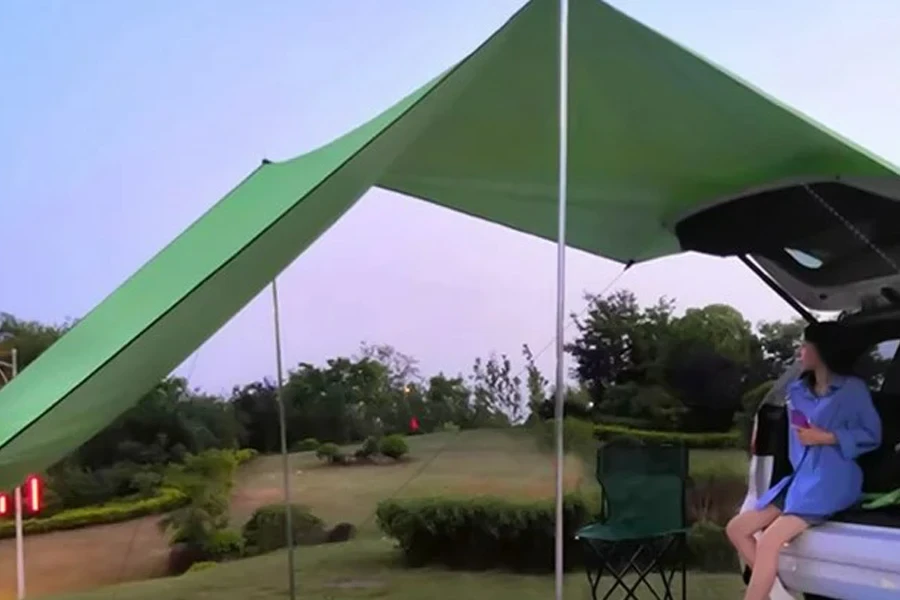
Sun shelters are not tents and cannot take the role of them. However, they are fantastic additions to any camping trip for various reasons. First, they offer crucial refuge from the sun’s intense heat and harmful UV rays, preventing sunburns and heat exhaustion. This benefit is especially important during peak daylight or in locations with strong sunlight.
Secondly, sun shelters provide a versatile space that consumers can use for various purposes. They can serve as a shaded dining area, a comfortable spot to relax and read, or even an additional sleeping space if campers equip them with walls and a floor. Despite not being as safe as tents, this flexibility makes sun shelters valuable for solo campers and families.
3 types of sun shelters
Beach umbrellas
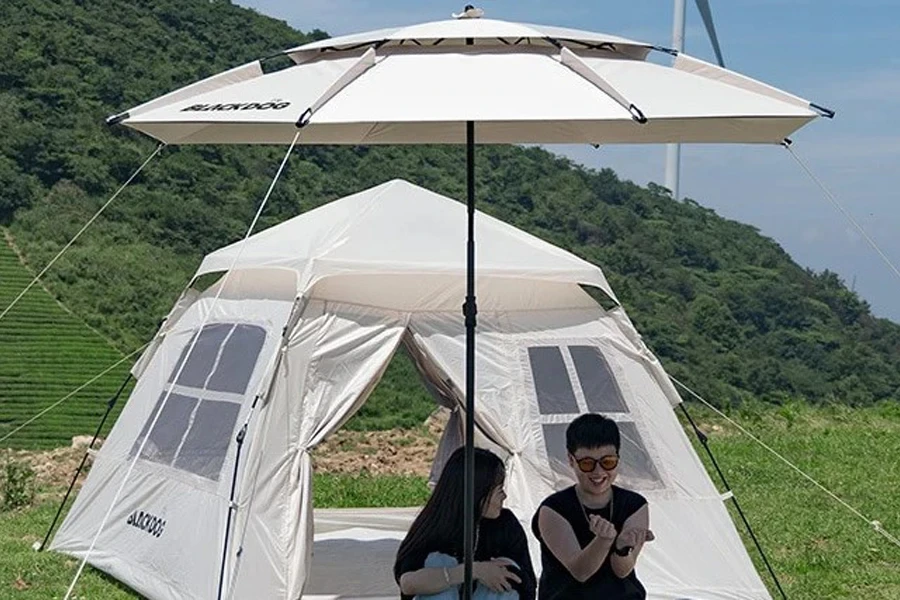
These sun shelters are not just for the beach—campers can also use them on their outdoor adventures. Beach umbrellas are the classic, simple, and affordable way for campers to stay shaded at their site. Typically, they have pointy ends that slide easily into the ground, allowing campers to place chairs, mats, and other camping furniture under them.
Canopies & cabanas
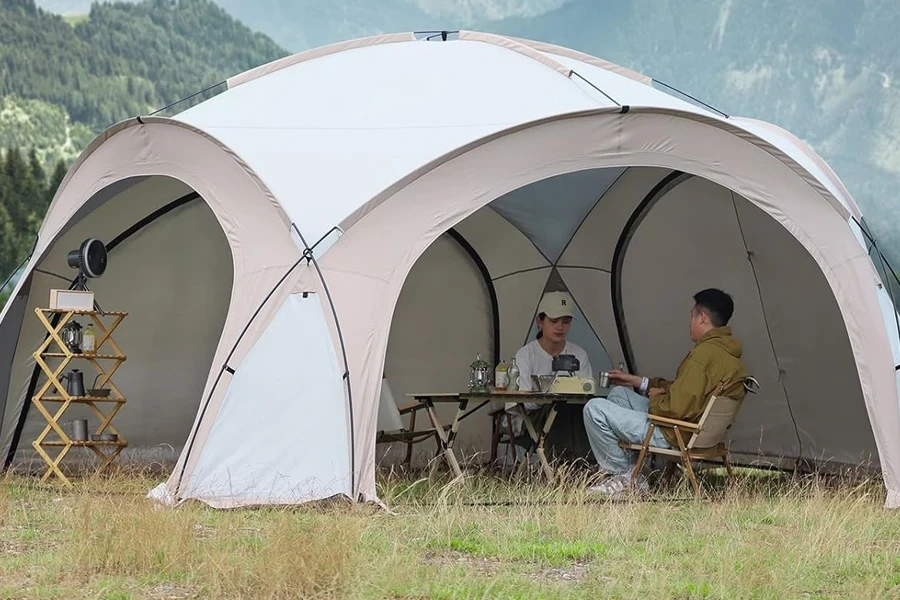
Usually, beach umbrellas can shelter only two people without squeezing. So, when more than two people need to stay away from the sun on camping trips, canopies offer way more coverage. They also come in different sizes, meaning different group sizes can find the perfect option for their needs.
On the other hand, cabanas are more luxurious and stylish, offering more privacy and comfort for outdoor lounging. They often have curtains or walls and extra features, like cup holders and built-in pockets.
Pop-up canopy
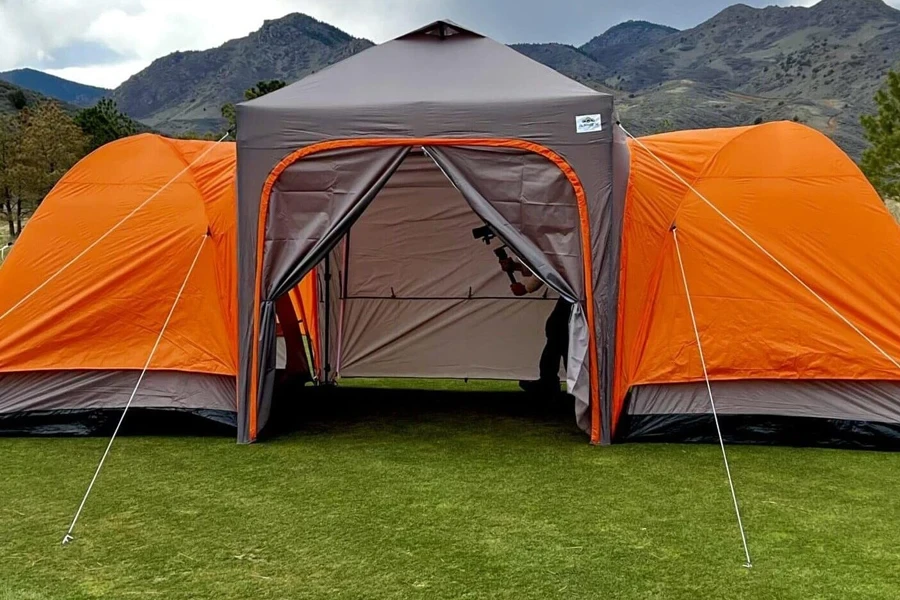
Pop-up canopies are the go-to option for consumers looking for easy-to-set-up/take-down shelters. These sun shelters get their “pop-up” features from lightweight frames that collapse into something smaller and more portable.
4 factors to consider when stocking sun shelters
Size and capacity
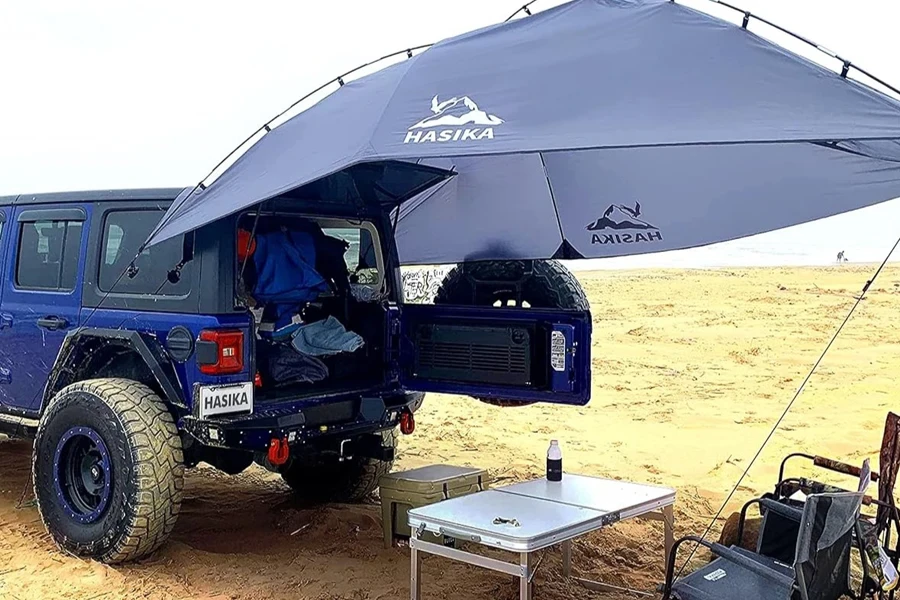
Business buyers can’t cater to their potential customers’ diverse needs if they don’t consider sun shelter size and capacity. Different campers look for sun shelters with various requirements based on group size, intended activities, and available campsite space. For example, solo campers or couples might prefer compact, lightweight shelters that are easy to carry and set up. But, families and larger groups would look for spacious shelters instead to comfortably accommodate everyone and their gear.
| Sun shelter type | Size (approximate) | Capacity (people) |
| Beach umbrella | 6 to 9 feet diameter | 1-2 |
| Canopy/cabana | 8” x 8” to 15” x 15” (larger sizes available) | 2-8+ |
| Pop-up canopies | 4” x 4” to 8” x 8” (larger sizes available) | 1-4 |
Material and durability
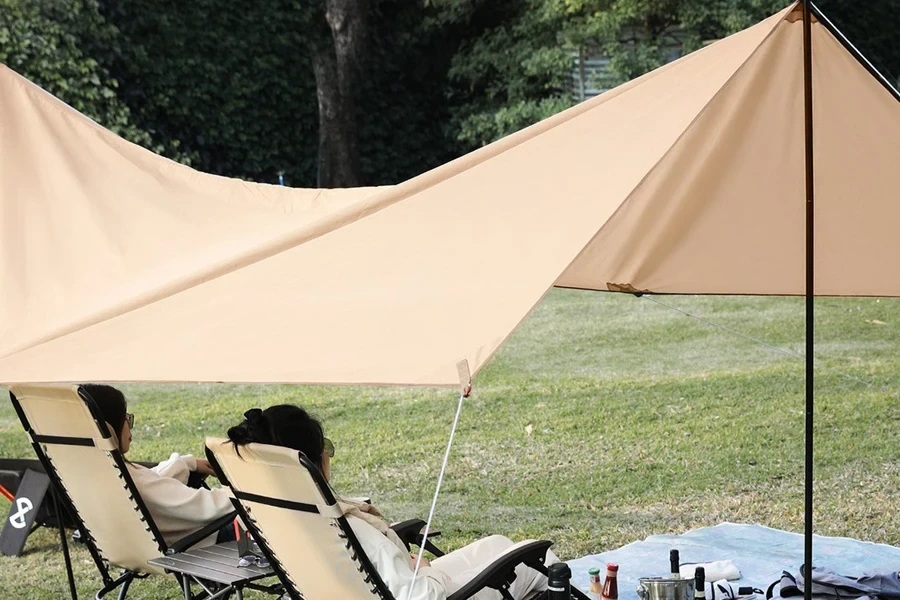
Several materials stand out as top choices for sun shelters, each offering unique benefits that cater to different needs and preferences. Here’s a closer look at the material options.
Polyester
Renowned for its durability, polyester is a popular choice due to its resistance to fading, wrinkles, and abrasion. It also dries quickly and offers excellent UV protection, making it ideal for extended outdoor use.
Nylon
Known for its lightweight and packable nature, many backpackers and those focused on portability prefer nylon sun shelters. While not as UV resistant as polyester, manufacturers can treat nylon with coatings to enhance sun protection.
Ripstop nylon
A more durable nylon variant, ripstop features reinforced threads woven into the fabric. This unique feature prevents small tears from spreading, ensuring ripstop nylon sun shelters stay intact. For this reason, ripstop nylon is an excellent choice for rugged environments and frequent use.
Polyethylene
Often used in budget-friendly shelters, polyethylene is lightweight and offers impressive water resistance. However, it may not be as durable as other materials and can degrade with prolonged sun exposure.
Ease of setup

Focus on setup simplicity when stocking sun shelters. No one wants to spend extra hours struggling with sun shelters while the sun beats them mercilessly. Luckily, most sun shelters come with easy setup processes. Businesses can consider offering pop-up or instant shelters that unfold effortlessly to those short on time—and they also require minimal effort and expertise.
However, some consumers prefer freestanding designs because of their convenience and stability. They often have pre-attached poles and simple anchoring mechanisms that make the set-up process less demanding for experienced campers. Such sun shelters appeal more to people who enjoy the process of pitching shelters and customizing their configurations.
Waterproofing

Waterproofing may not be the first thing that comes to mind when looking for sun shelters. Still, it enhances their versatility and functionality, catering to campers seeking protection beyond the sun’s rays. While manufacturers primarily design sun shelters for shade, some models may have water-resistant features to protect campers from unexpected drizzle or light rain.
Business buyers can look for sun shelters made from water-resistant materials, like coated polyester or nylon fabrics. They can also prioritize extra details, like taped seams to prevent leaks. Some models with built-in floors may have bathtub floor designs, where the edges of the floor curve upwards to prevent water from seeping in.
4 marketing mistakes businesses must avoid when selling sun shelters
Overpromising on features
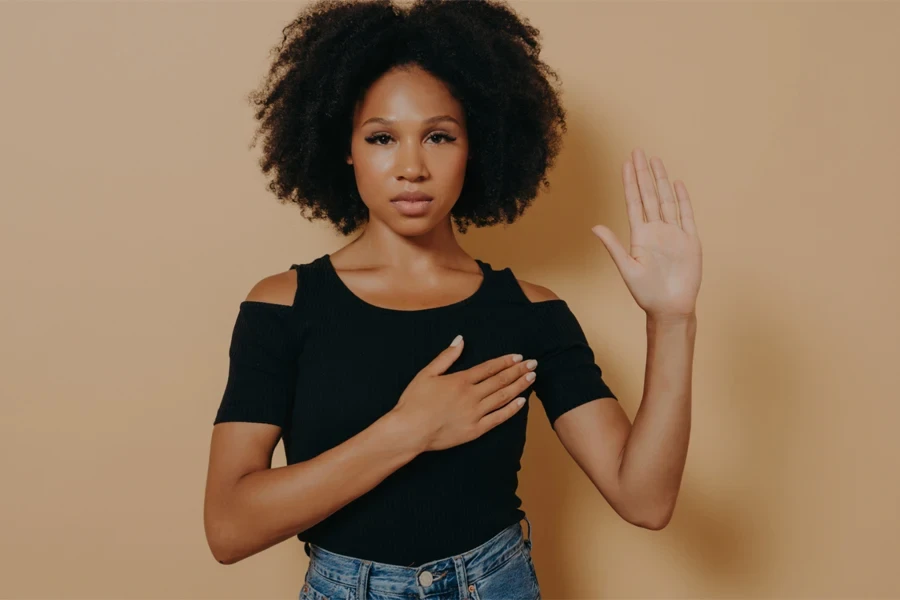
Don’t exaggerate the sun shelters’ capabilities. Be realistic about their durability, UV protection, and ease of setup. False claims can lead to disappointment and negative reviews.
Ignoring practical concerns

Campers and outdoor enthusiasts prioritize functionality. Don’t just focus on aesthetics. Address concerns about weight, portability, wind resistance, and water resistance.
Using generic imagery

Avoid using stock photos of models posing with the sun shelter in a studio. Instead, use images of real people using the shelter in outdoor settings. This strategy will help potential customers visualize how the product can benefit them.
Neglecting target audience segments

Campers and outdoor enthusiasts have diverse needs. Hence, retailers must avoid using a one-size-fits-all approach. Instead, they should tailor marketing messages to specific segments, such as backpackers, car campers, or festival-goers.
Wrapping up
Sun shelters were once an afterthought for many campers. But now, they are proving their worth as essential gear for enjoying outdoor time. From protecting against the sun’s harsh rays to providing a cool haven in the heat, this versatile accessory is changing how consumers experience hot afternoons at their camping sites. Sun shelters attracted 74,000 searches in May 2024, but businesses can expect demand to surge during the peak of summer. So, stock now to avoid missing out on sales. Also, get more insightful articles like this by subscribing to Alibaba Reads’ sports section.




